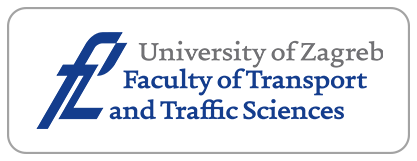Global 3D Point Cloud Object Detection System Based on Data-Level Stitching

Downloads
With the rapid development of artificial intelligence, the application prospects of global perception systems that can cover large-scale smart tunnel scenes are becoming increasingly widespread. Using multi-modal data from different sensors, the global perception system attempts to locate and track traffic targets. Due to the presence of detection blind spots at a considerable distance between two stations, which increases the difficulty of detection, the conventional global stitching method based on result-level stitching easily leads to problems such as lost vehicles and discontinuous trajectories in the blind area, and the low detection accuracy of sparse point cloud detection at the single station. To address these issues, this paper optimised the point cloud detection algorithm by improving the network structure and loss function to enhance the perception capability of the single station. Additionally, it proposed a data-level global point cloud stitching algorithm and a method for sampling from a difficult database, replacing the traditional global result-level stitching method and ensuring the fusion effect of global trajectories. Overall, this provides a more reliable and comprehensive perception fusion result for platform twinning. Finally, to validate the effectiveness of our method, we introduced the publicly available VANJEE-PointCloud dataset collected in the real world. The experiments show that our algorithm not only enhances perception capability but also improves the success rate of global trajectory fusion.
Downloads
Wang Y, et al. A negative binomial lindley approach considering spatiotemporal effects for modeling traffic crash frequency with excess zeros. Accident Analysis and Prevention. 2024;207:107741. DOI:10.1016/j.aap.2024.107741.
Yang Y, Yin Y, Yuan MZ. Modeling of freeway real-time traffic crash risk based on dynamic traffic flow considering temporal effect difference. Journal of Transportation Engineering Part A Systems. 2023;149(7):04023063. DOI:10.1061/JTEPBS.TEENG-7717.
Arnold E, et al. A survey on 3d object detection methods for autonomous driving applications. IEEE Transactions on Intelligent Transportation Systems. 2019;3782-3795. DOI:10.1109/TITS.2019.2892405.
Zhou Y, et al. End-to-end multi-view fusion for 3d object detection in lidar point clouds. arXiv. 2019. DOI:10.48550/arXiv.1910.06528.
Qi CR, Su H, Mo K, Guibas LJ. Pointnet: Deep learning on point sets for 3d classification and segmentation. In Proceedings of the IEEE conference on computer vision and pattern recognition. 2017;652–660. DOI:10.1109/CVPR.2017.16.
Wang Y, et al. Pseudolidar from visual depth estimation: Bridging the gap in 3d object detection for autonomous driving. In Proceedings of the IEEE/CVF Conference on Computer Vision and Pattern Recognition. 2019;8445–8453. DOI:10.48550/arXiv.1812.07179.
Qi CR, Yi L, Su H, Guibas LJ. Pointnet++: Deep hierarchical feature learning on point sets in a metric space. In Advances in Neural Information Processing Systems. 2017;30. DOI:10.48550/arXiv.1706.02413.
Thomas H, et al. Kpconv: Flexible and deformable convolution for point clouds. In Proceedings of the IEEE/CVF International Conference on Computer Vision. 2019;6411–6420. DOI:10.1109/ICCV.2019.00651.
Ku J, et al. Joint 3d proposal generation and object detection from view aggregation. 2017. DOI:10.48550/arXiv.1712.02294.
Yan Y, Mao Y, Li B. Second: Sparsely embedded convolutional detection. Sensors. 2018;18(10). DOI:10.3390/s18103337.
Zhang C,Luo W, Urtasun R. Efficient convolutions for real-time semantic segmentation of 3D point clouds. In 2018 International Conference on 3D Vision (3DV). 2018;399–408. DOI:10.1109/3DV.2018.00053.
Lang AH, et al. Pointpillars: Fast encoders for object detection from point clouds. In Proceedings of the IEEE/CVF Conference on Computer Vision and Pattern Recognition. 2019;12697–12705. DOI:10.1109/CVPR.2019.01298.
Yang B, Luo W, Urtasun R. Pixor: Real-time 3D object detection from point clouds. In Proceedings of the IEEE Conference on Computer Vision and Pattern Recognition. 2018;7652–7660. DOI:10.1109/CVPR.2018.00798.
Zhou Y, Tuzel O. Voxelnet: End-to-end learning for point cloud-based 3D object detection. 2017; DOI:10.48550/arXiv.1711.06396.
Qi CR, et al. Frustum pointnets for 3D object detection from RGB-D data. In Proceedings of the IEEE Conference on Computer Vision and Pattern Recognition. 2018;918–927.
Uy MA, Lee GH. Pointnetvlad: Deep point cloud based retrieval for large-scale place recognition. In Proceedings of the IEEE Conference on Computer Vision and Pattern Recognition. 2018;4470–4479. DOI:10.1109/CVPR.2018.00470.
Zhong Y, et al. SE-SSD: Self-ensembling single-stage object detector from point cloud. In Proceedings of the IEEE Robotics and Automation Letters (RA-L). 2021. DOI:10.1109/CVPR46437.2021.01426.
Li E, et al. SUSTech POINTS: A portable 3D point cloud interactive annotation platform system. IEEE. 2020. DOI:10.1109/IV47402.2020.9304562.
Gal Y, Ghahramani Z. Dropout as a Bayesian approximation: Representing model uncertainty in deep learning. In International Conference on Machine Learning. 2016;1050–1059.
Team OD. OpenPCDet: An open-source toolbox for 3D object detection from point clouds. 2020. https://github.com/open-mmlab/OpenPCDet.
Yin T, Zhou X, Krahenbuhl P. Center-based 3D object detection and tracking. In Proceedings of the IEEE/CVF Conference on Computer Vision and Pattern Recognition. 2021;11784–11793.
Chen S, Deng J, Li P. Voxel R-CNN: towards high performance voxel-based 3D object detection. In Proceedings of the IEEE/CVF Conference on Computer Vision and Pattern Recognition (CVPR). 2020.
Yan S, et al. PV-RCNN++: Point-voxel feature set abstraction and refinement for 3D object detection. In Proceedings of the IEEE/CVF Conference on Computer Vision and Pattern Recognition (CVPR). 2022.
Hu X, et al. CenterFormer: Fully transformers for point cloud object detection. In Proceedings of the IEEE/CVF Conference on Computer Vision and Pattern Recognition (CVPR). 2023.
Copyright (c) 2025 Yu LUO, Tao WANG, Shuai LU, Xuerui DAI, Zhi LI, Xuewei ZHANG

This work is licensed under a Creative Commons Attribution-NonCommercial 4.0 International License.




















